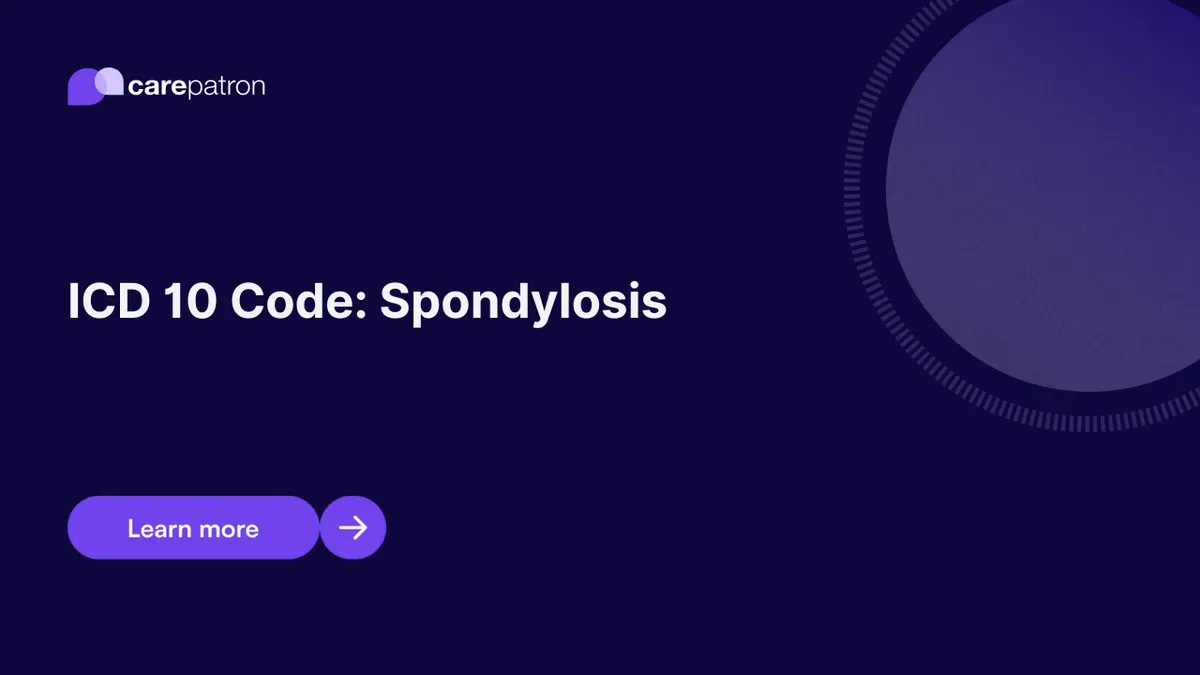
Spondylosis ICD-10-CM Codes
Navigate through the 2023 guide on Spondylosis ICD-10-CM codes. Learn about the specific codes, clinical descriptions, and billing implications.
Use Code
Commonly asked questions
Spondylosis is usually diagnosed through imaging tests like X-rays, MRI, or CT scans, a comprehensive physical examination, and a review of symptoms.
Treatment for spondylosis may include physical therapy, medications for pain relief, and surgical interventions like spinal fusion or laminectomy for severe cases.
Spondylosis is generally a progressive condition that can worsen over time if not properly managed. Early diagnosis and treatment are essential for symptom management and improving the quality of life.
EHR and practice management software
Get started for free
*No credit card required
Free
$0/usd
Unlimited clients
Telehealth
1GB of storage
Client portal text
Automated billing and online payments
